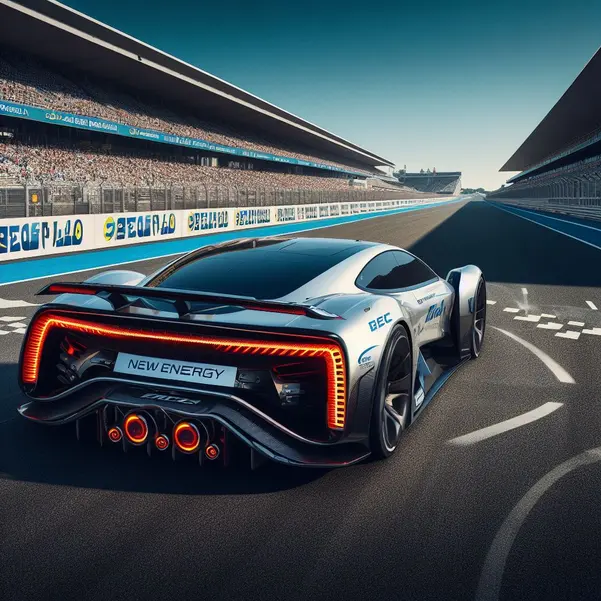As a car enthusiast, I often ponder about the future of the automobile industry, especially when considering the growing popularity of new energy vehicles (NEVs). Will these eco-friendly alternatives truly replace traditional fuel-powered cars anytime soon? That’s a question many of us are asking ourselves. In this blog post, we will dive into the pros and cons of new energy vehicles, their potential to overtake traditional cars, and where the industry is headed.

1. The Rise of New Energy Vehicles
New energy vehicles have gained significant traction in recent years, thanks to advancements in battery technology and increasing concerns about climate change. Electric vehicles (EVs), plug-in hybrid vehicles (PHEVs), and fuel cell vehicles (FCVs) are the primary types of NEVs. Automakers are investing heavily in the development of these vehicles, with many countries setting ambitious goals for their adoption.
2. The Advantages of New Energy Vehicles
There are several benefits to new energy vehicles that make them a promising alternative to traditional cars. Some of these advantages include:
Zero or Reduced Emissions
With climate change becoming a pressing concern, NEVs can play a crucial role in reducing greenhouse gas emissions and improving air quality.
Lower Operating Costs
New energy vehicles typically have lower fuel and maintenance costs.
Government Incentives
Many countries offer tax breaks and subsidies to encourage the adoption of NEVs.
3. The Challenges Facing New Energy Vehicles
Despite their advantages, new energy vehicles also face several obstacles that may hinder their widespread adoption:
Limited Range
Battery-powered EVs still have a limited driving range compared to fuel-powered cars.
Charging Infrastructure
Many places lack sufficient charging stations to support the widespread use of electric vehicles.
High Initial Costs
The purchase price of NEVs can be higher than traditional cars, although these costs may balance out over time due to lower operating expenses.
4. Can New Energy Vehicles Really Replace Traditional Cars?
As we weigh the pros and cons of new energy vehicles, it’s clear that they have the potential to replace traditional cars in the long run. However, this transition won’t happen overnight. With continued investments in technology, infrastructure, and policy support, NEVs could eventually become the new norm in the automobile industry.
However, it’s important to recognize that different regions will experience this transition at varying paces, depending on factors such as government policies, consumer preferences, and local infrastructure. In some areas, hybrid vehicles may play a more significant role in the transition, while in others, electric or fuel cell vehicles may take the lead.
Conclusion:
While it’s difficult to predict the exact timeline for the transition to new energy vehicles, there’s no denying that they have the potential to revolutionize the automobile industry. By addressing the challenges they face and capitalizing on their benefits, we can work towards a more sustainable, eco-friendly future for our roads. In the end, it’s up to us as consumers, policymakers, and industry leaders to drive the change we want to see.
Electric Vehicles FAQs:
1.How to choose between an electric vehicles and a traditional fuel-powered car?
When choosing between an electric vehicle (EV) and a traditional fuel-powered car, consider factors such as driving habits, range requirements, environmental impact, and available charging infrastructure. If you prioritize eco-friendliness and cost savings in the long run, an EV might be the better choice. However, if you require longer driving range, fast refueling, or live in an area with limited charging infrastructure, a traditional fuel-powered car might be more suitable.
2.What are the main differences between electric vehicles, plug-in hybrids, and fuel cell vehicles?
Electric vehicles (EVs) are powered solely by batteries, which are charged by plugging the vehicle into an external power source. Plug-in hybrid vehicles (PHEVs) combine a traditional internal combustion engine with an electric motor and a rechargeable battery. PHEVs can operate in electric-only mode for shorter distances and switch to the internal combustion engine when the battery is depleted. Fuel cell vehicles (FCVs) generate electricity through a chemical reaction between hydrogen and oxygen, with water as the only emission.
3.How can governments help accelerate the adoption of new energy vehicles?
Governments can accelerate the adoption of new energy vehicles (NEVs) by offering incentives such as tax breaks, subsidies, and rebates to make NEVs more affordable. Additionally, they can invest in the development of charging and refueling infrastructure, promote research and development in NEV technology, and implement policies that encourage the use of NEVs, such as emissions standards, low-emission zones, and priority lanes.
4.What are the current trends in new energy vehicle technology?
Current trends in new energy vehicle technology include improving battery capacity and energy density to increase driving range, developing faster charging solutions, enhancing energy efficiency, and exploring alternative energy sources such as hydrogen fuel cells. Other trends include vehicle-to-grid (V2G) technology, which allows EVs to return surplus energy back to the power grid, and the integration of NEVs with autonomous driving and connected car technologies.
5,How to find charging stations for electric vehicles in your area?
To find charging stations for electric vehicles in your area, you can use various smartphone apps or websites that provide up-to-date information on charging station locations, availability, and compatibility with your specific EV model. Some popular apps and websites include PlugShare, ChargePoint, and Electrify America. Additionally, many electric vehicle manufacturers offer built-in navigation systems with charging station information.


